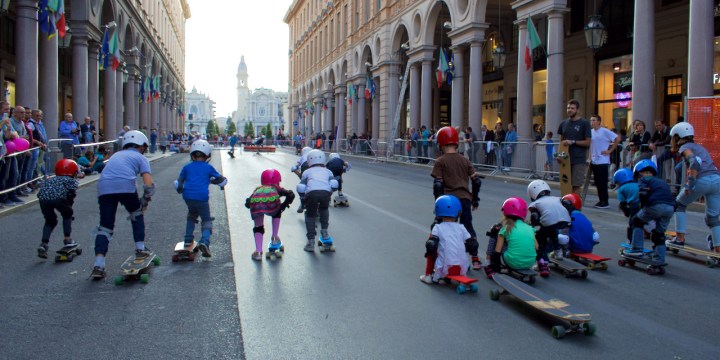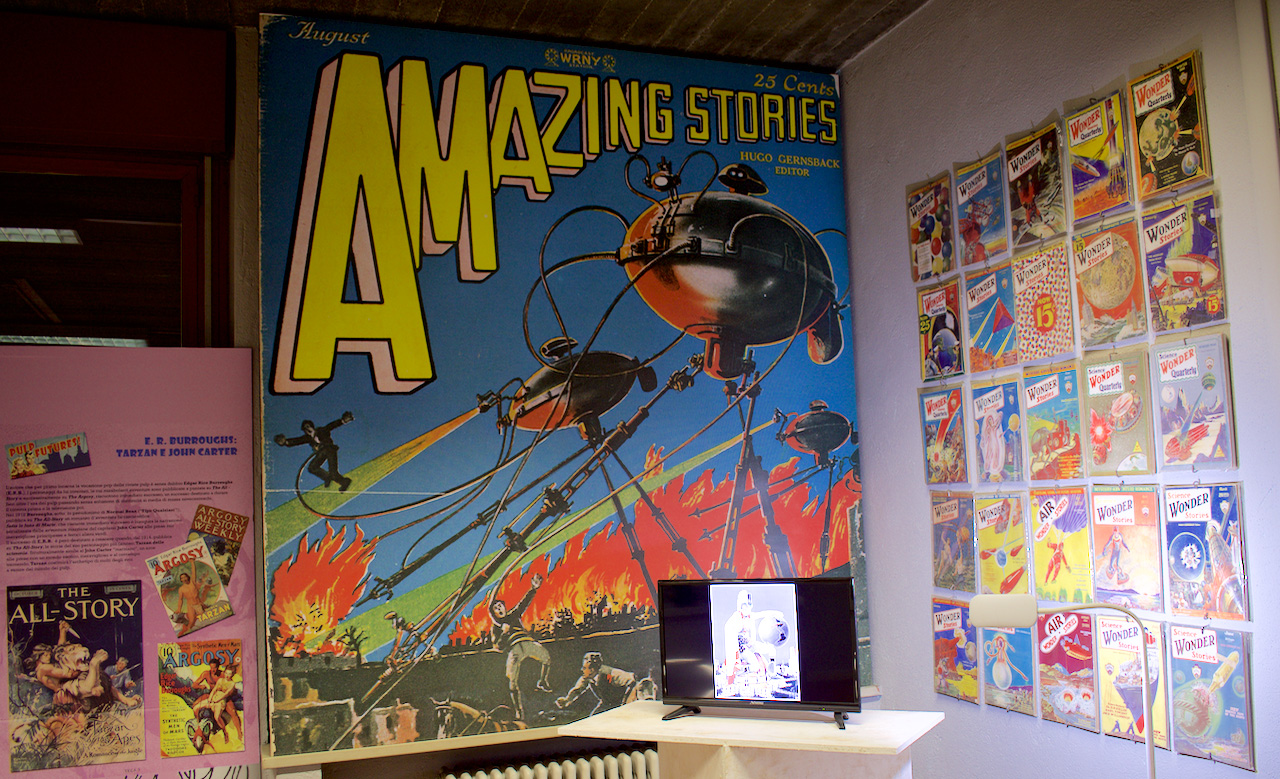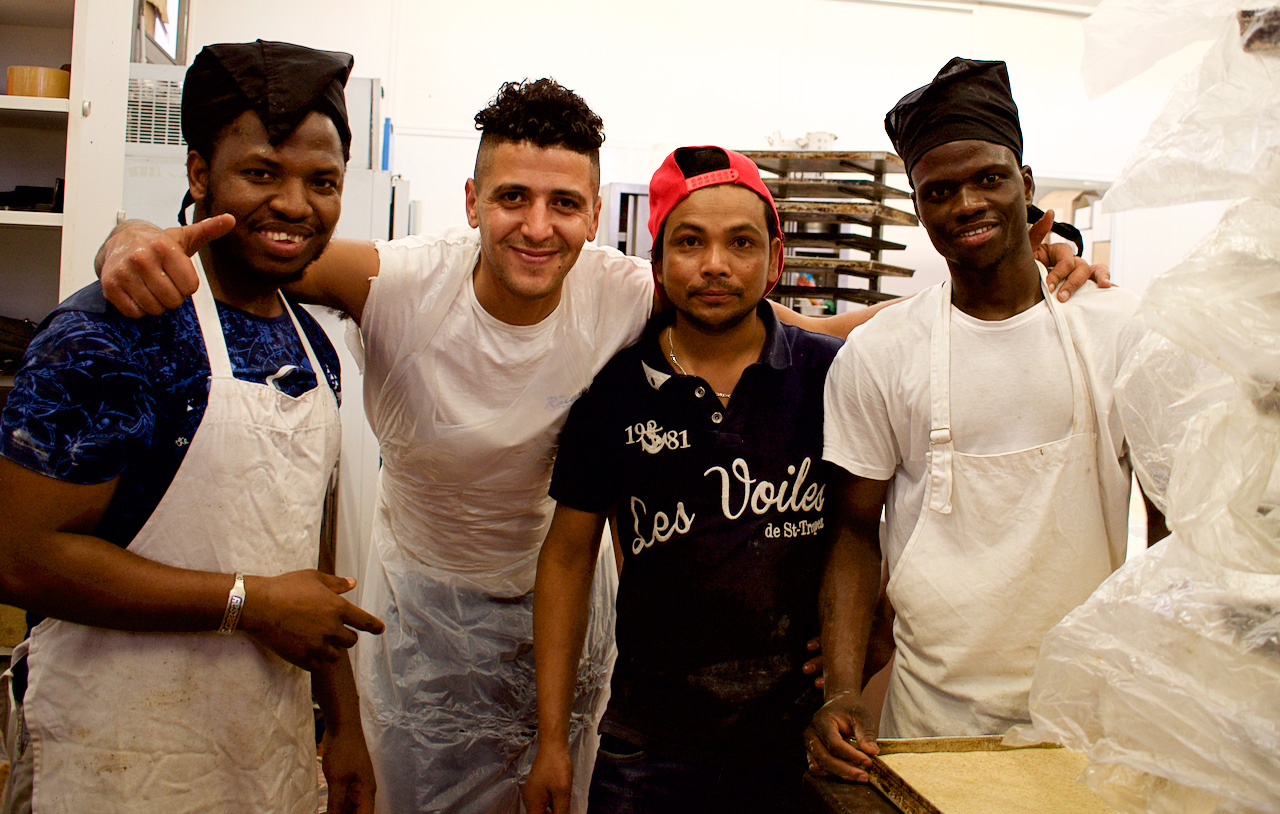OP-ED
In search of development alternatives: A ‘whole of society’ approach to social innovation in Turin, Italy

In Turin, public space is recognised as a real social and economic asset — an opportunity to build a sense of community and to enhance livelihoods.
‘The compliance culture that has evolved since 1994 has all but killed the developmental state’ say Mark Swilling, Amanda Gcanga and Andrew Boraine in a hard-hitting recent article in Daily Maverick. They question whether Ramaphosa’s New Dawn can bring the heat and light anticipated, without change in the civil service, which they characterise as being in a state of ‘institutional paralysis’. They highlight the need for a more ‘relational’ developmental state — able to engage in effective, collaborative partnerships. So where in the world are examples of this? In dire need of inspiration, I set off on a quest to find out — starting in Turin, Italy.
***
It’s a spring weekend in Turin. The pedestrianised centre of the city throngs with people, jostling at white-tented stalls where small-scale entrepreneurs are selling artisanal products. Up in Piazza San Carlo — Turin’s most beautiful porticoed square — a children’s gymnastics competition is in full swing. In front of City Hall, a market gives small-scale farmers access to urban markets. I stumble upon a group of young musicians, playing Vivaldi to an appreciative crowd in yet another elegant piazza. In a break they confirm: yes, they have permission to play here. In fact, the city encourages musicians to do so and has designated sites that buskers can book.
In Turin, public space is recognised as a real social and economic asset — an opportunity to build a sense of community and to enhance livelihoods. “The social use of public spaces” is also used as a tool for integration in a city with a long history of immigration. It’s just one symptom of a culture of social innovation for which Turin has become renowned.
How and why? These were my questions when I met city officials Giovanni Ferrero and Alice Zanasi, from the City’s Office of the Urban Commons. We meet in Casa San Salvario — the former municipal baths. It’s been converted into one of eight Neighbourhood Houses, in mainly working-class areas.
Each one has its own history, driven by local associations and “active citizens” seeking to create a common space in which to link otherwise fragmented local initiatives. The role of the municipality has been to enable and support such endeavours; making vacant public buildings available, finding resources for renovation and partnering with the Foundation of the Compagnia di Sao Paolo — a bank that contributes significantly to social initiatives in Turin — to support a learning network of these “houses”.
As we chat in the café/bar — run as a social enterprise, of course — an earnest meeting of about 20 women is taking place outside, on plastic chairs in the sun. Kids play in the courtyard, there are music classes upstairs. A quick scan of the noticeboard highlights upcoming activities: a social event targeting elderly people; a support session for carers of children with disabilities; a jazz evening. There are legal services for migrants and language classes.
At one level, this might seem to be a classic “community centre” model. Except these “houses” are about more than just providing spaces for hire. They are run by locals, for locals, with an active organising agenda of unlocking local initiative — to address local needs, to support creativity, to create networks and opportunities for shared experience.
It’s an approach the city seeks to support in other ways, too — such as with its Co-City initiative, that supports “Pacts of Collaboration” with local actors.
Ferrero explains: “We call for proposals for the use of public buildings and public spaces and then we build systems for co-design and co-management. By unlocking local initiative and active citizenship in this way, we strengthen the urban commons.”
These Pacts of Collaboration are simple contracts that set out the roles and responsibilities of the city and local actors. Turin’s experiments in this regard are supported by a European initiative named Urban Innovative Actions (UIA). While the city does provide funding, “the emphasis is on in-kind contributions”, explains Zanasi. From the city, this can include providing use-rights to vacant property or public spaces, public works support to building or infrastructure renovations, waivers of utility fees, lending out public works equipment, or technical support from city staff. “For locals, the contribution typically takes the form of volunteer labour,” she explains.
Some pacts are for very localised actions by informal groups, such as for urban agriculture on vacant lots, while others are more ambitious, such as for Mufant — the Museum of Fantasy and Science Fiction.

An exhibition at Mufant, the Museum of Fantasy and Science Fiction. (Photo: Kate Phillip)
Mufant started as the hobby of local enthusiasts in Borgo Vittoria — a poor neighbourhood. With city support, a remarkable collection of movie props, books, comics and more has been curated in a previously vacant building. In June, Mufant launched a retro video-game arcade. It is also now converting derelict public space around the museum into the Parco del Fantastico. The first of seven pieces of street art has just been launched there; it’s a three-metre tall iron sculpture of Frankenstein, engraved with a quote from Italian mental-health activist Franco Basaglia, which says: “Seen up close, nobody is normal.”
The statue was created with the support of Il Bandolo, a Turin association combating mental illness, in a project that celebrates the 40-year anniversary of the Basaglia Law, which conferred rights on mentally ill patients in Italy.
So, what are the origins of this level of local participation — and city responsiveness? Certainly, Turin has a centuries-old history of activism. But Fabrizio Barbiero, from the Social Innovation Office of Turin, points also to the importance of “the Castellani experience”, which created “a tradition of dialogue with the whole of society, working together in order to face specific challenges”.
As mayor, Valentino Castellani led a remarkable turnaround of Turin in the 1980s. An academic, not a politician, he was approached by both the left and the right to stand for election in a context in which mass layoffs at Fiat had had a domino effect across the entire local economy, leading to the loss of more than 100,000 jobs.
Castellani used the development of a New Urban Master Plan as a unifying platform for the transformation of Turin. While many cities have master plans, he led a “whole of society” approach, convening a Forum for Development with more than 1,000 participants drawn from diverse constituencies and roleplayers in a process that took two years to complete.
According to Castellani, a critical challenge was to convince “the prophets of decline” that a renaissance for Turin was possible.
“Project by project, this became an experiment in strategic planning”, he explains. Eighty-four initiatives were agreed, each with multi-stakeholder participation — and multi-stakeholder contributions to implementation.
“Naturally, not all the actions were successful,” he emphasises. “Actually, some of them failed. But on the whole, the strategic plan was widely implemented.” Among its successes were the Winter Olympics, which raised Turin’s international profile, as well as initiatives to turn Turin into “the city of cinema”. This included the establishment of a Museum of Cinema, the Turin Film Festival, a virtual reality park and more. New hi-tech sectors were promoted and the creative economy supported. It was in this period also that the Slow Food Movement started in Turin, now attracting more than 200,000 people to its bi-annual festival, in the process reviving the value of artisanal and traditional foods as part of the city’s identity.

Panacea is a bakery in Turin, run as a social enterprise, that employs migrants. (Photo: Kate Phillip)
Yet just as Turin’s economic efforts were gaining momentum, the 2008 crisis hit. For the city, its impacts were compounded when in the same year, the central government withdrew the city’s power to raise local taxes. Yet it was on the back of these powers that they had raised the finance to invest in infrastructure — including in the public transport systems that now link peripheral neighbourhoods to the centre. This left Turin high and dry with debt it could barely service.
“So we had to draw once again on the ‘whole of society’ approach of the Castellani era, to support economic recovery and social resilience,” explains Barbiero.
As part of its response, the city established Torino Social Innovation, in partnership with more than 40 local organisations, including banks, companies, incubators, universities and NGOs. Its aim is to support social enterprises and start-ups that address social needs, such as in education, employment, mobility, health and inclusion. The process actively supports platforms that bring roleplayers together, for ideas-generation and networked learning, with calls for proposals against city priorities.
For example, the city supported Turin’s first “social hotel”. It backed a co-op to renovate a large derelict block. It now comprises 122 small apartments, housing people in transition, for a maximum of 18 months. It also includes 58 cheap hotel rooms and includes wider community facilities such as a library, play areas and an after-school club for children. It has more than 40,000 users a year — and there are now five such co-op-managed social hotels in Turin. Part of the aim is to enable the social integration of newcomers to the city.
Torino Social Innovation actively builds a partnership-based ecosystem, with many different forms of contribution crowded in to support each initiative. There are incubation and acceleration options. Private companies offer tutoring, hi-tech equipment access, product testing and advice. Seed funding has been mobilised. The city provides guarantees for low-interest loans for start-ups and can waive utility costs. There are discounted co-working spaces with free access to WiFi. A private sector foundation provides initial wage grants to jobs created in start-ups. To attract entrepreneurs from outside the city, social housing is provided to them at discounted rates.
In addition, “the Italian regulatory system is complicated; we can assist start-ups to navigate it”, explains Barbiero. “There may be problems to solve. We walk with them to do so. This is what we mean by public-private partnership.”
As part of Turin’s focus on promoting social innovation, the inner workings of the bureaucracy have not been spared. Yet when the concept of an innovation challenge for public officials was first raised in 2014, it was not initially embraced at all levels of the bureaucracy.
“Applications to Innova-TO (Innovation Torino) had to be anonymised because less senior officials were afraid of the response to their proposals to do things differently. And the panel of adjudicators had to be external,” says Barbiero. Prizes were donated by the private sector, as there was no internal mechanism to reward innovation. The response surprised the sceptics. More than 111 staff participated, with 74 proposals for innovation within the city. Most proposals were for process improvements, many of which required new ways of working outside existing silos. One of the winning entries was for energy sensors to minimise power usage in public buildings. Innova-TO is now an annual challenge and the model has been replicated in many European cities.
Turin is certainly inspiring. Yet city officials are at pains to highlight limitations and weaknesses. The debt burden hasn’t gone away. Poverty and exclusion remain. Reliance on European funds means a project-level focus, with issues of sustainability looming as project cycles end. Compared to the heady days of the New Urban Master Plan, there’s frustration at the limited current scope to drive systemic-level change.
Certainly, these are real issues. What they take for granted, however, is the extent to which collaboration, partnership and participation by local actors is institutionalised within their practice; the extent to which the role of city officials is to enable rather than dis-enable local initiative and risk-taking — and the assumption that solutions require a “whole of society” approach. This “relational state” is their normal. Right now, it’s all too rarely ours. DM















 Become an Insider
Become an Insider